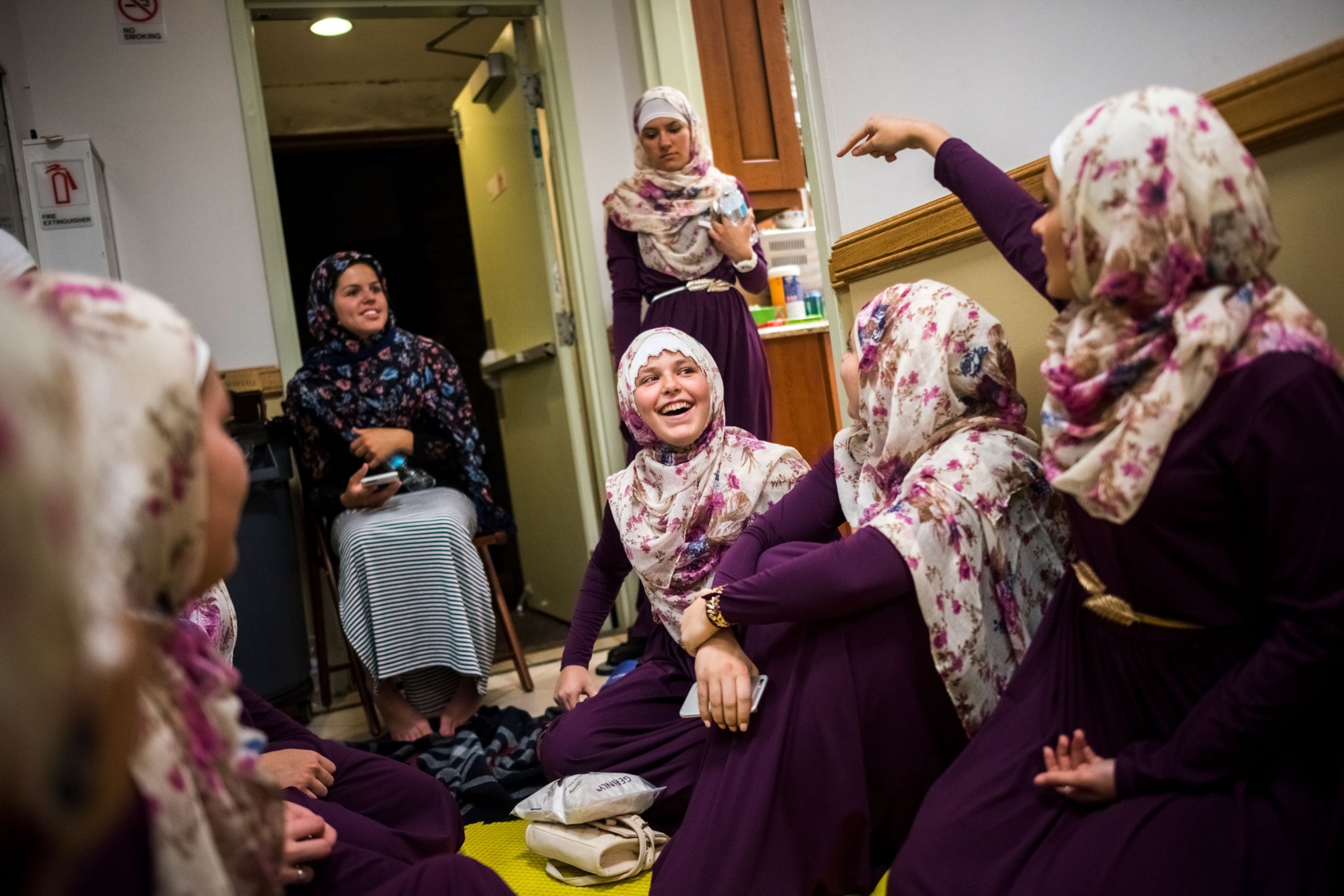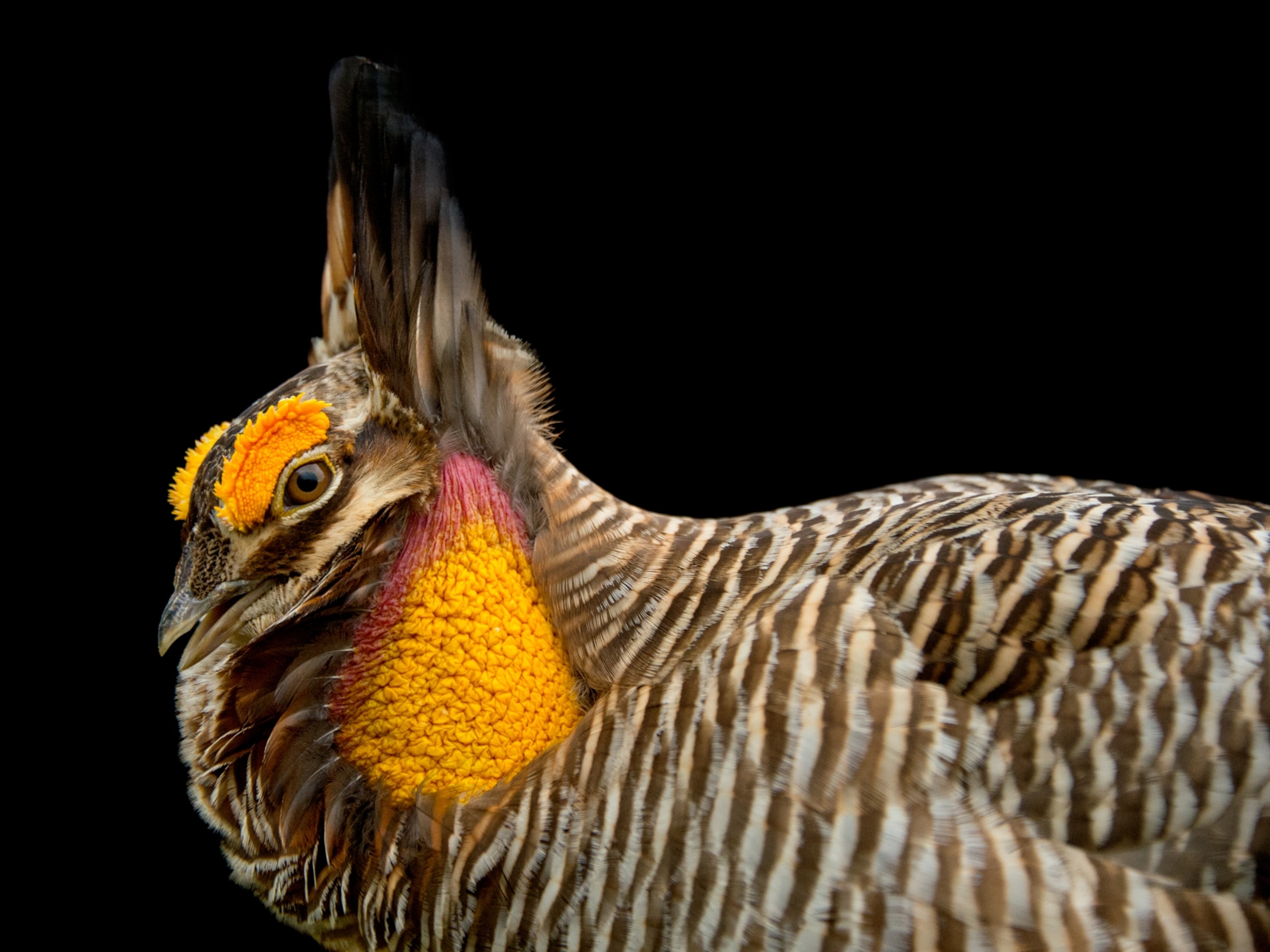






See how American Muslims celebrate Islam’s holiest holiday
Eid al-Fitr celebrations in the United States are as diverse as the country itself.
This weekend, a new crescent moon will rise and usher in Eid al-Fitr, the vibrant conclusion to the Islamic holy month of Ramadan. To mark the occasion, National Geographic selected images from our archive that showcase the joy, devotion, and community of Ramadan in the United States.
Islam is deeply woven into the country's fabric. It dates back to colonial America when Muslims arrived in slave ships from West Africa and quietly practiced their faith long before the establishment of the U.S. Constitution. Today, an estimated three to four million American Muslims from a diverse swath of races, ethnicities, and socioeconomic backgrounds represent a growing minority in the U.S. Each subgroup—from African Americans to South Asian immigrants to newly resettled refugees from the Middle East—is defined by its own social and cultural history.
Ramadan, the ninth month of the Arabic lunar calendar, threads more than a billion Muslims around the world together under a common tradition. It is the most sacred time of year, believed to be when the first verses of the Quran were revealed to the Prophet Muhammad more than 1,400 years ago. According to Islamic texts, "When the month of Ramadan starts, the gates of heaven are opened and the gates of Hell are closed and the devils are chained."
Fasting during Ramadan is one of the fundamental tenets called the Five Pillars of Islam. Able-bodied Muslims abstain from food, drink, and sex from dawn to dusk—an exercise in physical, psychological, and spiritual discipline. The fast is a reminder of the fragility of human life; encourages compassion toward the poor; and is meant to foster a relationship with God in lieu of seeking bodily pleasures.
On a more symbolic level, some Muslims believe each day serves as a reminder of the brevity of life and a representation of its phases: Strength after the sunrise meal represents youth, weakness as the day wanes represents old age, and breaking fast at sunset represents paradise after death.
Those who cannot fast—the ill, pregnant, nursing, menstruating, children, and elderly—are encouraged to express their faith through charitable giving instead. Fasting is not exclusive to Islam, but also practiced in Judaism and Christianity within their own unique contexts.
Because the Arabic lunar calendar differs from the traditional Gregorian calendar, the dates of Ramadan and the length of the fast change every year. The sighting of the new moon signals the end of Ramadan and the beginning of Eid al-Fitr, the three-day “feast of breaking fast.” Muslims from all walks of life congregate in mosques across the country to celebrate through almsgiving, prayer, gift exchange, and a fusion of cultural traditions.
This story originally published on June 26, 2017 and has been updated.
You May Also Like
Go Further
Animals
- We finally know how cockroaches conquered the worldWe finally know how cockroaches conquered the world
- Move over, honeybees—America's 4,000 native bees need a day in the sunMove over, honeybees—America's 4,000 native bees need a day in the sun
- Surveillance Safari: Crowdsourcing an anti-poaching movement in South Africa
- Paid Content
Surveillance Safari: Crowdsourcing an anti-poaching movement in South Africa - Fireflies are nature’s light show at this West Virginia state parkFireflies are nature’s light show at this West Virginia state park
- These are the weird reasons octopuses change shape and colorThese are the weird reasons octopuses change shape and color
- Why young scientists want you to care about 'scary' speciesWhy young scientists want you to care about 'scary' species
Environment
- These images will help you see coral reefs in a whole new wayThese images will help you see coral reefs in a whole new way
- What rising temperatures in the Gulf of Maine mean for wildlifeWhat rising temperatures in the Gulf of Maine mean for wildlife
- He’s called ‘omacha,’ a dolphin that transforms into a man. Why?He’s called ‘omacha,’ a dolphin that transforms into a man. Why?
- The northernmost flower living at the top of the worldThe northernmost flower living at the top of the world
- This beautiful floating flower is wreaking havoc on NigeriaThis beautiful floating flower is wreaking havoc on Nigeria
History & Culture
- Scientists find evidence of ancient waterway beside Egypt’s pyramidsScientists find evidence of ancient waterway beside Egypt’s pyramids
- This thriving society vanished into thin air. What happened?This thriving society vanished into thin air. What happened?
Science
- Why pickleball is so good for your body and your mindWhy pickleball is so good for your body and your mind
- Extreme heat can be deadly – here’s how to know if you’re at riskExtreme heat can be deadly – here’s how to know if you’re at risk
- Why dopamine drives you to do hard things—even without a rewardWhy dopamine drives you to do hard things—even without a reward
- What will astronauts use to drive across the Moon?What will astronauts use to drive across the Moon?
- Oral contraceptives may help lower the risk of sports injuriesOral contraceptives may help lower the risk of sports injuries
- How stressed are you? Answer these 10 questions to find out.
- Science
How stressed are you? Answer these 10 questions to find out.
Travel
- The ‘Yosemite of South America’ is an adventure playgroundThe ‘Yosemite of South America’ is an adventure playground
- These farmers make it possible for hikers to access Alpine trailsThese farmers make it possible for hikers to access Alpine trails
- A guide to Philadelphia, the US city stepping out of NYC's shadowA guide to Philadelphia, the US city stepping out of NYC's shadow
- How to make perfect pierogi, Poland's famous dumplingsHow to make perfect pierogi, Poland's famous dumplings
- The best long-distance Alpine hike you've never heard ofThe best long-distance Alpine hike you've never heard of




